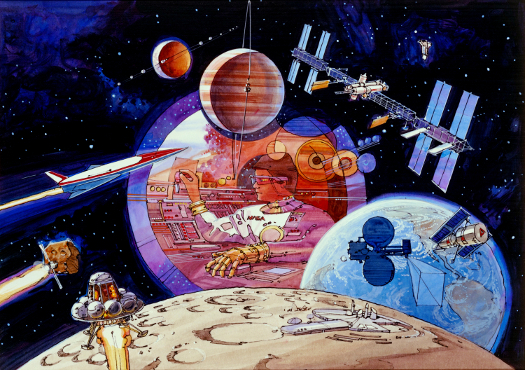Summer seminar series 2024
The 2024 series consists of 7 seminars highlighting the Ames Research Center’s diverse capabilities and expertise in several topic areas such as access systems, wildfire management, astrobiology, and engineering systems.
Below is the schedule for the 2024 NASA Summer Series.
- Tuesday, July 16 – Tony Colaprete – VIPER: A mission to better understand lunar water
- Thursday, July 18 – Victor Yeh – Micro-RNA: Enables personalized diagnostics for radiation exposure and beyond
- Tuesday, July 23 – Erin Flynn Evans – Sleeping in the air: What we know and what we need to know when humans travel to the Moon and Mars
- Tuesday, July 30 – Jessie Dotson – The Asteroid Threat Assessment Project
- Thursday, August 1 – Alonso Vera – Towards Earth-independent manned space missions
- Tuesday, August 6 – Michael Lowry – Neuromorphic computing: transferring neuroscience to silicon and prospects for space missions
All seminars will take place at 11:00 a.m. PDT and will be streamed virtually.
Tony Colaprete
VIPER: A mission to better understand lunar water
Join the meeting now
Conference ID: 229 986 458 575
Passcode: uq9NBR
Microsoft Teams Need help?
Abstract:
Although significant progress has already been made in understanding lunar volatiles through orbital observations, measurements at a scale range from centimeters to kilometers across the lunar surface are needed to validate “volatile mineral models” that can be used to assess lunar volatile resource potential. To this end, the primary objectives of the Volatiles Investigation Polar Exploration Rover (VIPER) mission are to (1) provide baseline data for orbital models and datasets, including small-scale temperatures, subsurface temperatures and regolith density, surface hydration, and hazards, (2) correlate surface environments and volatiles with orbital datasets, and (3) investigate key hypotheses related to sources and sinks, retention, and distribution of volatiles in the polar region that are critical to developing economic models and identifying potential sites for further resource assessment. The VIPER mission is a mission to explore volatiles in the polar region of the Moon, developed by the Planetary Science Division of NASA’s Science Mission Directorate (SMD). The mission includes a rover-borne payload that can locate volatiles on the surface and near the surface, excavate and analyze samples of the volatile regolith, and demonstrate the form, extractability, and usability of the materials.
Biography:
Anthony Colaprete is a planetary scientist at NASA Ames Research Center. Dr. Colaprete has led or participated in several flight projects, including PI and Payload Manager for the LCROSS mission and PI and Instrument Manager for the LADEE UVS instrument. Currently, Dr. Colaprete is the PI for the NIRVSS instrument, an instrument that flew on the Astrobotic Peregrine Mission-1 lunar module and is one of four instruments on the VIPER rover mission. Dr. Colaprete is the lead mission scientist for the Volatiles Investigating Polar Exploration Rover (VIPER) lunar rover mission. Over the past decade, Dr. Colaprete has worked to translate techniques and principles from terrestrial resource exploration to lunar and Martian resource exploration, developing a framework for “applied planetary science” that bridges the gap between science, exploration, and technology.
Discover more





